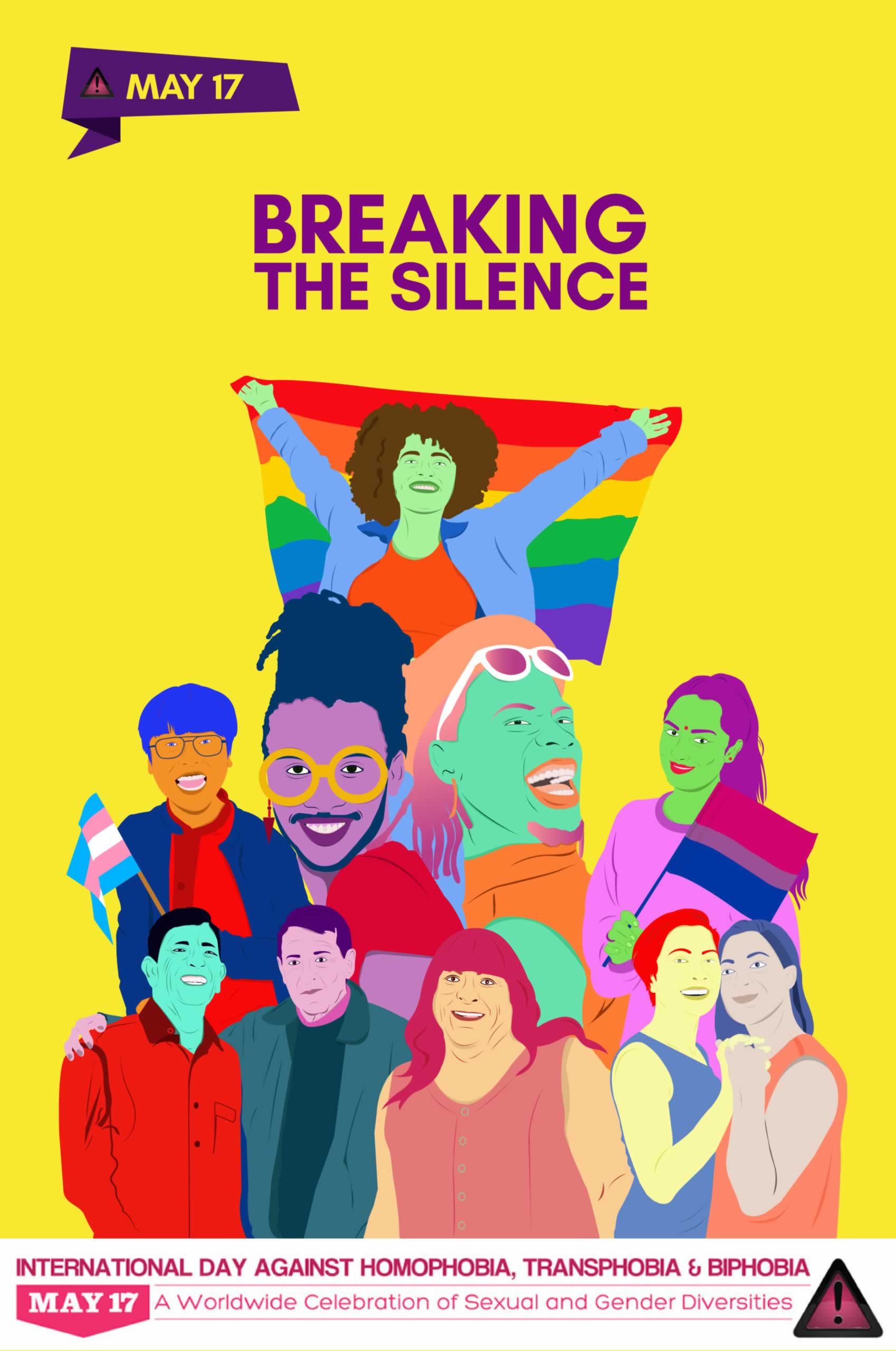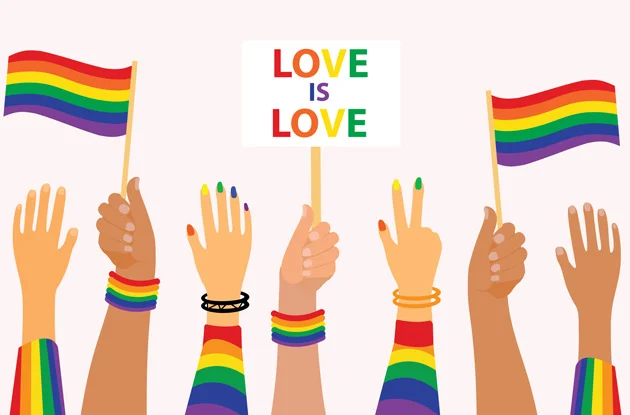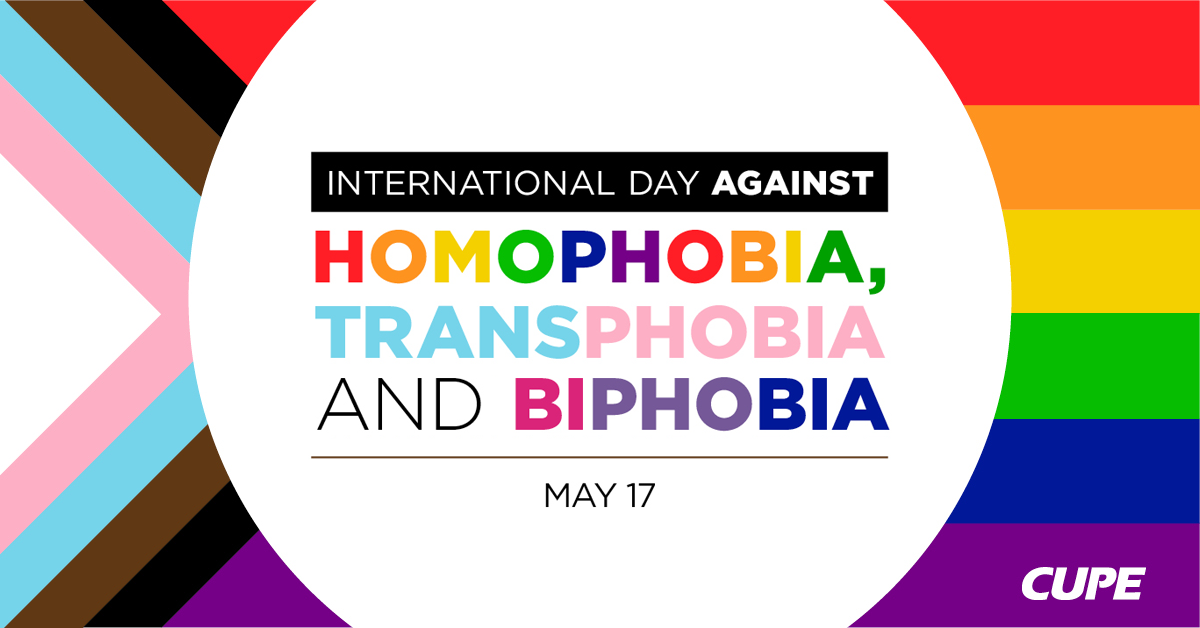By Rania Tsoli,
People come in all forms; whether you look at it from a literal or a metaphorical point of view, there are so many shades, shapes, and sizes to us. Besides our skins, our thoughts and emotions compose a palette of all the colors of the rainbow, along with all of our differently shaped bodies, hearts, and ideas. Together, we fit to create a gorgeous spectrum of individuality, quirks, and imperfections that make us who we are. Just like us, the lives we lead undoubtedly differ; the ways we experience numerous notions vary, with love being a prime example. There are many sides to love and even more days to celebrate their beauty; however, one day stands out.
Every year, on the 17th of May, the International Day Against Homophobia, Transphobia, and Biphobia comes around, and it is the day dedicated to shutting toxicity and hatred down, while fighting for people’s rights to simply be themselves and letting the love of all forms shine through.
International Day Against Homophobia, Transphobia, and Biphobia (IDAHOT) was created in 2004 to draw attention to the violence and discrimination experienced by lesbian, gay, bisexual, transgender, and intersex people, as well as all other people with diverse sexual orientations, sex characteristics, and gender identities or expressions, and to stimulate interest in the LGBTQIAP+ community’s rights and culture worldwide.

The date of May 17 was specifically chosen to commemorate the World Health Organization’s decision to stop classifying homosexuality as a mental disorder and to remove it from the International Classification of Diseases in 1990. The day is currently observed in over 130 countries, including 37 nations where same-sex conduct is prohibited. As briefly mentioned above, since 2004, the name of the campaign has expanded to include other terms as well, with transphobia being added to the name of the campaign in 2009, and biphobia being added in 2015.
The main purpose of the campaign’s mobilizations is to raise awareness of violence, discrimination, and repression of LGBTQIAP+ communities worldwide, which in turn provides an opportunity to take action and engage in dialogue with the media, public opinion, and wider civil society. One of the stated goals of the IDAHOT is to create an event that can be observable at a global level, without needing to conform to a specific type of action; this decentralized approach is needed due to the diversity of social, cultural, religious, and political contexts in which rights violations occur.
Despite the fact that the three principal issues mentioned in the name of the celebration, May 17 is widely regarded as an initiative that is constantly working to advance the rights of people with diverse gender identities or expressions, sexual orientations, and sex characteristics. This allows for a widespread fusion of different self-identified expressions coming together to share happiness, love, and pride in oneself for daring to be authentic, as participants take charge against a variety of pervasive forms of hate in the world.

In order to truly support and empathize with the LGBTQIAP+ community and celebrate the International Day Against Homophobia with them, one ought to be informed of the daily struggles that the members of the community experience on a frequent, if not daily basis: studies have found that non-heterosexual people face up to twice as much abuse or violence – including mental, emotional, physical, and sexual – than their heterosexual counterparts. This sort of toxic prejudice and discrimination against them adds an additional layer of risks of physical and psychological nature, which can lead to depression, anxiety, and in many unfortunate cases, suicide.
Research has found that LGBTQIAP+ people have an increased risk of developing depression, anxiety, substance abuse, self-harming, and suicidal thoughts. Simultaneously, same-sex-attracted people, intersex people, and transgender people have higher levels of psychological distress, as well as significant levels of anxiety, when compared to heterosexual people. From mockery and harmful stereotypes to violent discrimination and abuse, queer people face a number of struggles, which all make their lives more complicated and difficult than they should ever be to a fairly large extent.
There has been an epidemic of violent crime against queer individuals throughout the years, with transgender individuals – and particularly trans women of color – being the most frequent victims. Trans women of color are among the most vulnerable minorities, fighting against racism, sexism, and transphobia, putting them at a significantly higher risk for violence against them. A significant percentage of homeless youth identifies as LGBTQIAP+, and they often end up on the streets because they are rejected by their family members. While homeless, young queer people are more likely to face violence, end up in danger or participate in a crime, and encounter trauma that can affect their entire lives.

The problem of homelessness is compounded when LGBTQIAP+ people can legally be denied housing or experience unfavorable treatment in renting homes online based on their identities. When it comes to employment discrimination, queer individuals can be fired from their job on the basis of their sexual orientation or gender identity, which means that they can often lose their job regardless of job performance or ability. Lastly, in a vast majority of countries and states, kids can still be sent to so-called “gay conversion therapy”, an infamous and harmful practice that attempts to steer young people away from their sexuality or gender identity.
“All human beings are born free and equal in dignity and rights”, states Article 1 of the Universal Declaration of Human Rights. LGBTQIAP+ people face discrimination, prejudice, stigma, hostility, and violence in their day to day lives; they are often denied their civil and human rights, essential health care and legal protections, as well as their right to bodily autonomy when forced to go through medical treatments designed to “cure” them. The IDAHOT was established in 2004 to bring an end to the toxicity, discrimination, and hatred directed toward the LGBTQIAP+ community, as well as to celebrate people’s rights to be who they want to be and love who they want to love.
By celebrating the 17th of May, we urge ourselves – as well as others – to steer away from ignorance and insensitivity, and towards information and empathy, with a future where the LGBTQIAP+ community can be celebrated every day, without any fear, but full of confidence, boldness, and authenticity instead.
References
- What is May 17?, may17.org, Available here
- International Day Against Homophobia, Transphobia and Biphobia, wikipedia.org, Available here
- Factors affecting LGBTI people, beyondblue.org.au, Available here
- 9 Battles The LGBTQ Community In The US Is Still Fighting, globalcitizen.org, Available here




